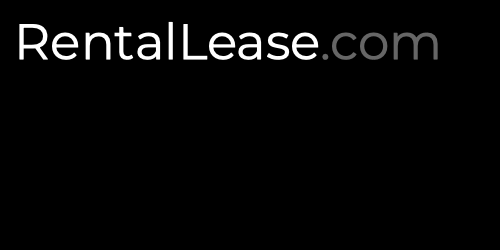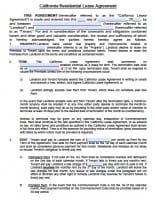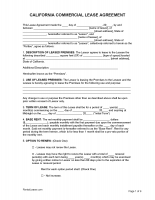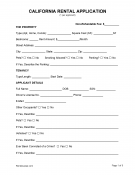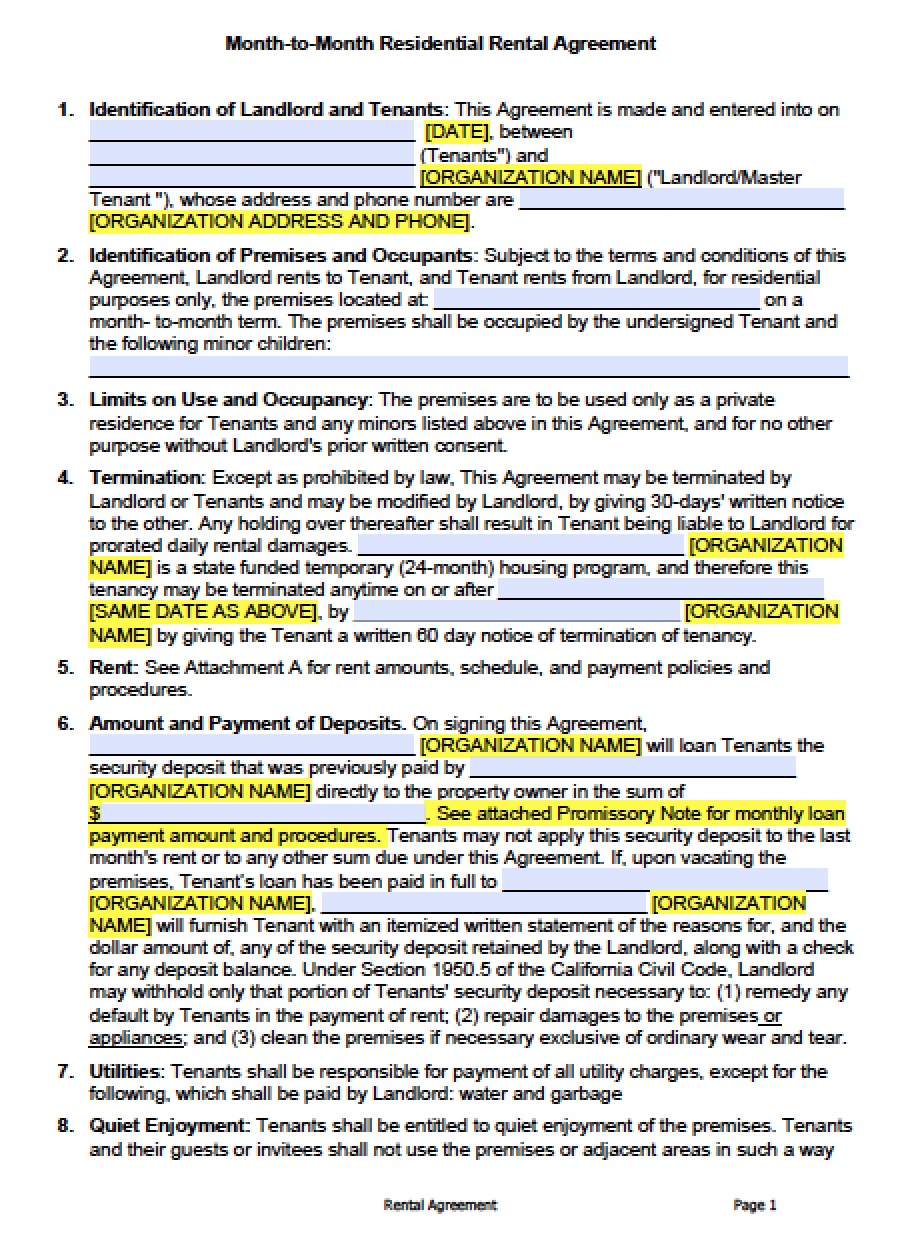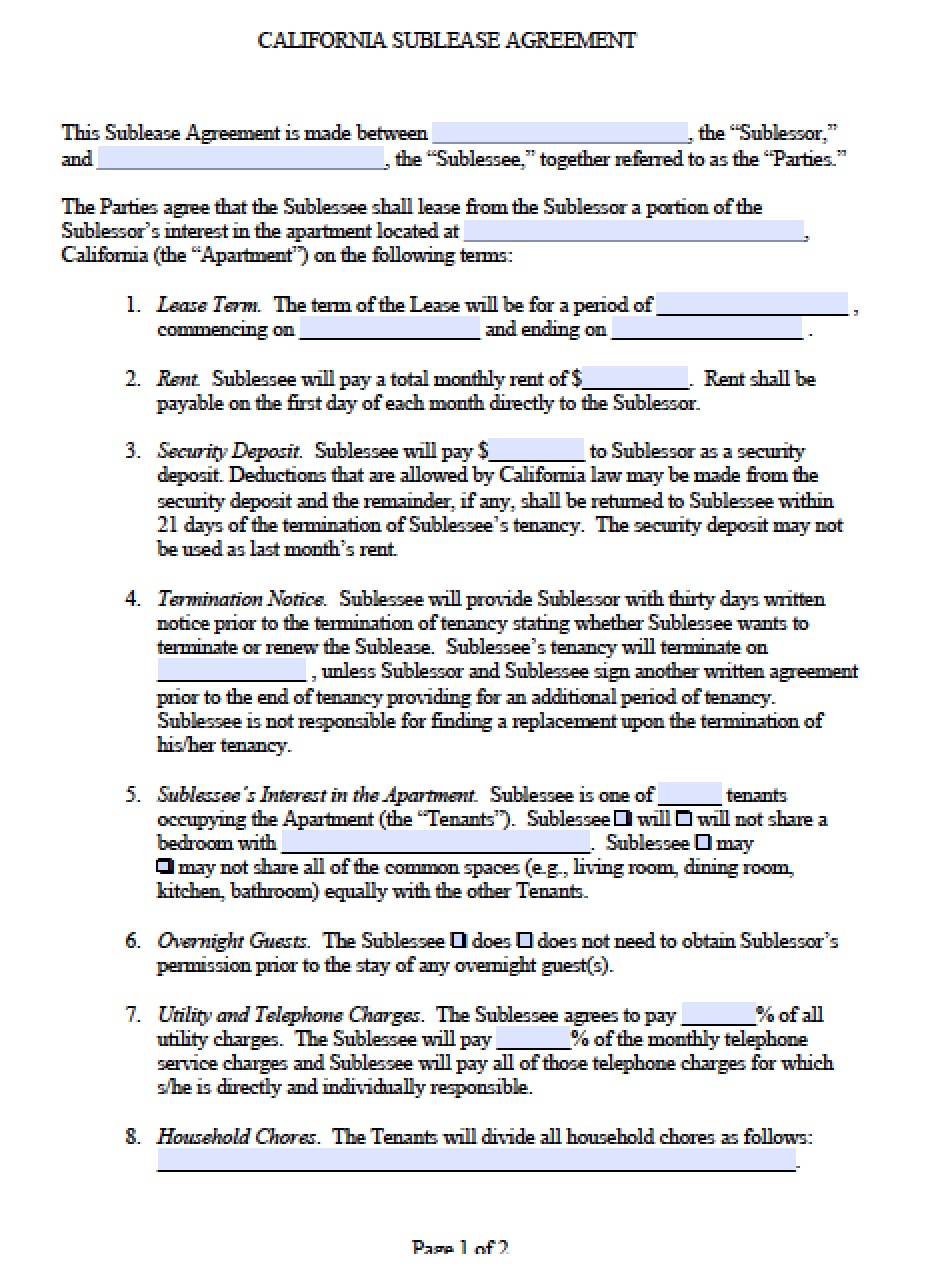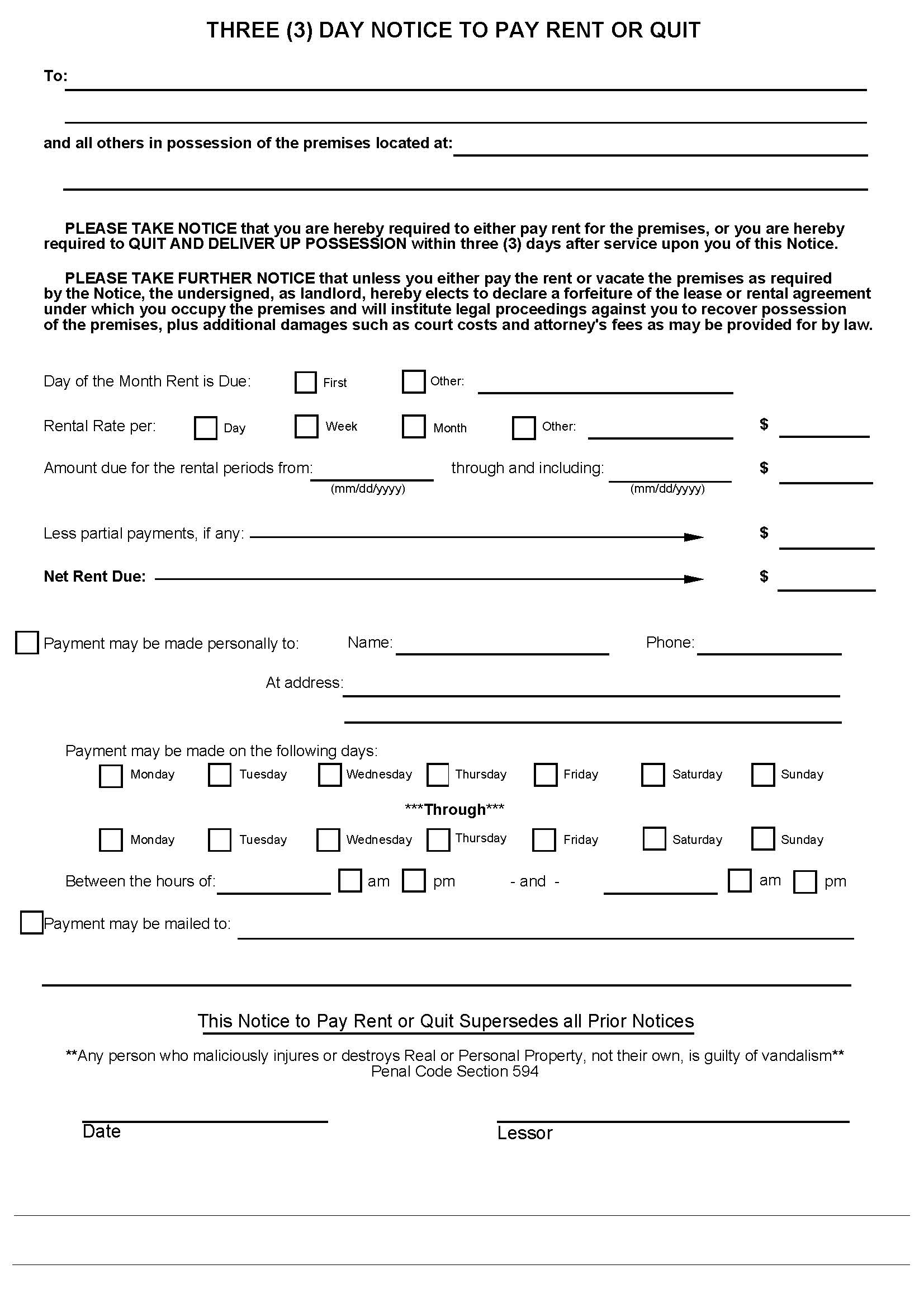California rental agreements are written between a landlord and tenant seeking to lease residential or commercial property. The agreement is commonly signed after the landlord conducts a background check and verifies the tenant’s income (using a rental application). Once the tenant screening is complete, the landlord will negotiate any last remaining items and enter into the agreement for signature.
Landlord Laws– (See Guide to Landlords’ and Tenants’ Rights and Responsibilities)
